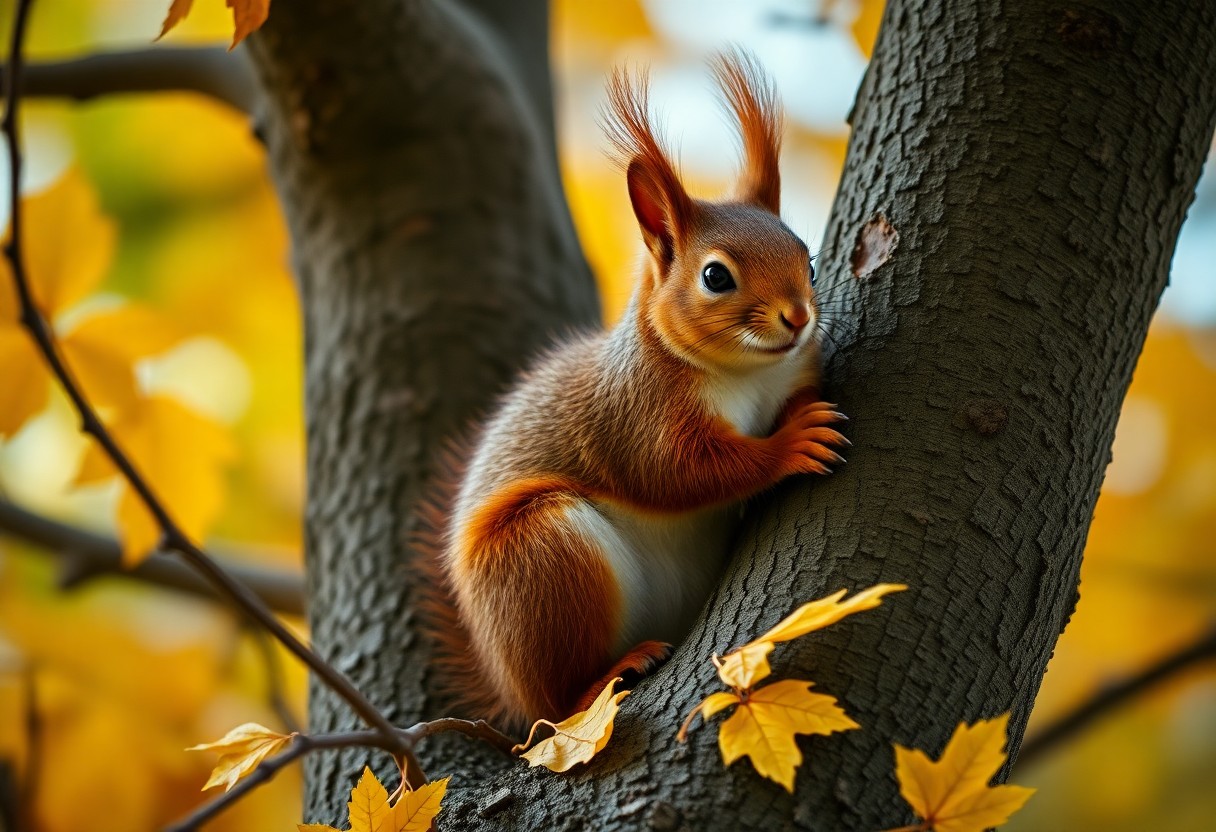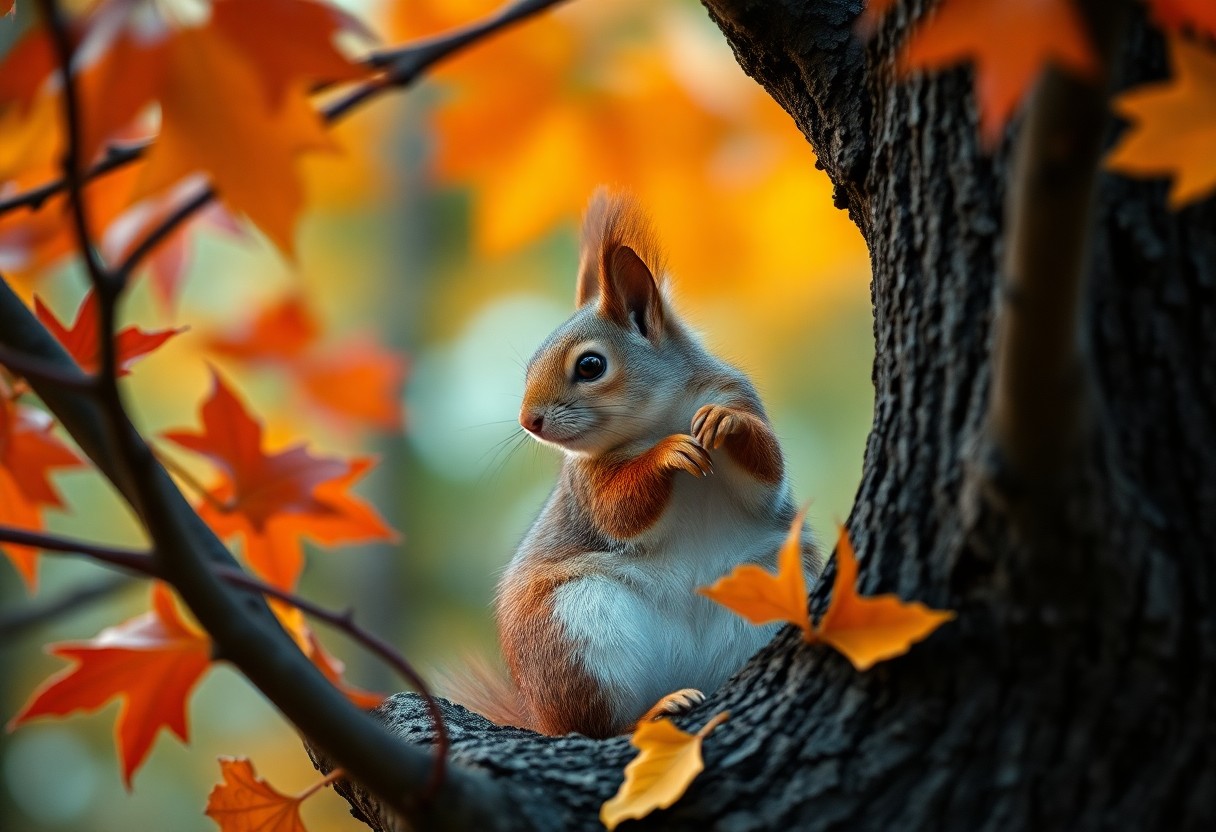This guide will equip you with the skills to effectively draw a squirrel that captures its lively spirit and distinct features. You will learn how to master the basic shapes important for creating a realistic outline and how to add texture to its fur to bring your drawing to life. With tips on shading and proportion, you will be able to enhance your drawing technique, making your squirrel not just recognizable but also charming. Let’s get started on this fun artistic journey!
Table of Contents
Key Takeaways:
- Basic Shapes: Start by sketching simple shapes like circles and ovals to form the body and head of the squirrel.
- Details and Features: Focus on adding features like the eyes, ears, and bushy tail for a more realistic appearance.
- Shading and Texture: Incorporate shading techniques to create depth and texture, enhancing the overall look of your drawing.
Getting Started
A great way to improve your drawing skills is by learning how to draw a squirrel. Start by gathering your materials and choosing a good reference image to ensure your final piece captures the characteristics of this lively creature. As you progress through this guide, you’ll gain confidence in your technique and develop a deeper appreciation for wildlife art.
Essential Materials
While tackling this drawing project, you’ll need some basic materials. A good selection includes sketching pencils, paper, an eraser, and optional colored pencils or markers for adding life to your artwork. Having these necessarys on hand will streamline your drawing process and enhance your overall experience.
Choosing the Right Reference
Essential to your drawing success is selecting the right reference image of a squirrel that showcases its unique features and poses. This could be in the form of a photograph or a live specimen. The right reference allows you to observe details, such as fur texture and body proportions, which are key to achieving an accurate likeness.
Reference images are invaluable because they provide you with visual guidance throughout the drawing process. Look for high-resolution pictures with good lighting that show the squirrel from different angles. Pay attention to distinctive characteristics like bushy tails and pointy ears, which will make your drawing more captivating. Using varied references can also inspire creative poses and compositions, adding more interest to your artwork.

Understanding Squirrel Anatomy
There’s a lot to learn when it comes to understanding squirrel anatomy, as it helps you capture their unique characteristics in your drawings. Observing how their body structure works can enhance your artistic skills and provide more depth to your sketches. Squirrels have particular features that differentiate them from other animals, making them interesting subjects for artists and nature enthusiasts alike.
Key Features to Observe
While studying squirrels, pay close attention to the following key features:
- Tail: bushy and long, often used for balance
- Ears: large and pointed, providing excellent hearing
- Eyes: round and expressive, often black or dark brown
- Paws: small and agile, perfect for climbing and gripping
- Fur: soft, dense coat varying in color from gray to reddish brown
After observing these features, you’ll find that they contribute significantly to their charm and agility.
Proportions of a Squirrel
Observe the proportions of a squirrel, which can vary but generally follow a pattern that helps you in rendering them accurately. The body is typically smaller than the length of the tail, which acts as a balancing tool during their agile movements. Front and hind limbs are also proportionate; the front limbs are shorter but are equipped with dexterous paws, while the hind legs are muscular for jumping. Focus on capturing the ratios of these body parts, as they will strongly influence the realism of your drawing. The head should be slightly larger compared to the body to reflect their character, while the body is compact and slender, enhancing their lively nature.
Basic Drawing Techniques
Not every artist begins with the same style, but understanding fundamental techniques is crucial when drawing a squirrel. Start with basic shapes to form the body, head, and limbs. With practice, you’ll blend proportion and perspective to create a more lifelike representation, refining your ability to capture the squirrel’s unique characteristics.
Sketching Guidelines
Now it’s time to lay down the foundation for your squirrel drawing. Lightly sketch geometric shapes to define the structure. Use circles for the head and body, and ovals for the limbs and tail. Focus on the pose and proportions to enhance the overall balance, giving you a solid base for detail development.
Shading and Texturing Tips
There’s an art to adding depth with shading and texturing.
- Use gradients to indicate light and shadow.
- Apply cross-hatching for texture on fur.
- Experiment with blending techniques for smooth transitions.
- Capture the slight variations of color in your shading.
Assume that using the right tools, like pencils and blending stumps, will enhance your texturing capabilities, providing depth to your squirrel illustration.
Plus, effective shading can bring your drawing to life! Vary the pressure of your pencil to alter darkness and lightness, adding dimension to your work. Consider using materials such as charcoal and pastels for softer shadows and rich textures. >By blending layered shades, you will emulate the fluffy appearance of a squirrel’s fur. Through experimentation, you can discover the best ways to mimic natural elements. Assume that with patience and practice, your squirrel drawing will become a masterpiece.

Step-by-Step Drawing Process
Now, let’s break down the drawing process into manageable steps. Use the following table to guide you through each stage of drawing your squirrel:
| Step | Description |
|---|---|
| 1 | Start with basic shapes to form the body. |
| 2 | Outline the head and facial features. |
| 3 | Add limbs and tail structure. |
| 4 | Refine the outline by adjusting proportions. |
| 5 | Incorporate details and textures. |
| 6 | Shading and coloring to bring your drawing to life. |
Outlining the Squirrel
For this phase, sketch a basic outline using light strokes. Begin by defining the shapes of the head, body, and limbs. Pay close attention to the proportions, as it’s important to capture the unique characteristics of your squirrel, such as its bushy tail and pointy ears.
Adding Details and Features
One of the most enjoyable aspects of drawing is adding details and features. Focus on the squirrel’s fur texture, which can be depicted with short, quick strokes. Make sure to give special attention to the eyes, ears, and claws, as these features convey the squirrel’s lively personality.
This stage allows you to bring your squirrel to life. Highlight the inner ear for a vivid look, and use fine lines to illustrate fur for a realistic texture. Don’t forget the small details in the eyes, which are vital for expressing emotion. Incorporate shadows and highlights throughout the body to add depth and dimension, ensuring your squirrel appears dynamic and full of character.
Common Mistakes to Avoid
Many artists encounter pitfalls while drawing squirrels, which can hinder their overall progress. It’s important to recognize and avoid these common mistakes to improve your skills and achieve a more lifelike result. From misinterpreting the squirrel’s anatomy to neglecting the nuances of movement, being aware of these errors can help you create a more accurate representation of this charming creature.
Overcomplicating Shapes
If you find yourself struggling with your squirrel drawings, it’s likely because you are overcomplicating shapes. Focus on simple forms that capture the basic structure of the squirrel, like ovals and circles, before adding details. This approach allows you to build a strong foundation for your drawing.
Failing to Study Movement
Little attention to the natural movements of squirrels can lead to stiff and unrealistic poses in your drawings. By observing how squirrels interact with their environment, you’ll gain insight into their playful, agile nature.
Study the way squirrels leap from branch to branch or scurry across the ground; these movements are important to capturing their character. Pay close attention to their postures and gestures during these actions to create a sense of motion. An understanding of their movement will not only enhance your drawings but also provide your artwork with a dynamic quality that draws the viewer’s eye. By immersing yourself in their behavior, you can significantly improve the liveliness of your sketches.
Tips for Enhancing Your Skills
Unlike many art forms, drawing a squirrel requires both patience and practice. To truly hone your skills and bring your drawings to life, consider these strategies:
- Study references closely.
- Experiment with different techniques.
- Challenge yourself to capture the details.
- Regularly sketch from life.
Assume that consistency is key to improvement.
Practice Techniques
Tips for enhancing your drawing skills include setting aside regular time for practice. Focus on shapes and proportions at first, gradually incorporating shading and fine details. Use basic shapes to construct your squirrel and practice drawing from different angles. Over time, challenge yourself with various poses and settings.
Utilizing Feedback
Little adjustments can lead to significant improvements in your work. Seeking constructive feedback from peers or art communities can provide insights that you may have overlooked. Embrace critiques, as they can fine-tune your understanding and application of skills—imperative for your growth as an artist.
Plus, sharing your drawings allows you to gather varied perspectives. This feedback can highlight both strengths in your work and areas needing attention, helping you create more realistic and engaging squirrel images. Actively engaging with a community will foster a positive learning environment where you can ask questions and find inspiration from others. This practice not only boosts your confidence but also accelerates your artistic journey.
Final Words
Presently, you have the tools and understanding necessary to draw a squirrel with confidence. By following the outlined steps and practicing regularly, you can enhance your skills and develop your unique style. For a more comprehensive approach, you can refer to this How to Draw A Squirrel – A Step by Step Guide that provides additional tips and techniques. Embrace your creativity and enjoy the process of bringing your squirrel sketches to life!
FAQ
Q: What are the basic steps to draw a squirrel?
A: To draw a squirrel, start by sketching a simple outline. Begin with a large oval for the body and a smaller circle for the head. Next, add two smaller ovals for the ears and a bushy tail shape extending from the back of the body. After establishing the basic shapes, refine the outline, adding details like the eyes, nose, and legs. Finally, add shading or color to enhance your drawing and give it depth.
Q: What materials do I need to start drawing a squirrel?
A: To draw a squirrel, you will need some basic materials. A pencil is imperative for initial sketching, allowing for easy corrections. An eraser can help refine your drawing as you work. Once you have the basic sketch, you may choose to use inking pens for defined lines or colored pencils and markers for adding color. If you prefer digital art, a tablet and drawing software can also be used to create your squirrel illustration.
Q: How can I make my squirrel drawing more realistic?
A: To achieve a more realistic squirrel drawing, focus on observing real squirrels as references. Pay attention to their fur texture by using varied line strokes to mimic hair. Adding details such as the curvature of the body, the shape of the claws, and the whiskers can enhance realism. Incorporate shading techniques using lighter and darker tones to create depth, and consider the light source in your drawing to add highlights and shadows accurately.